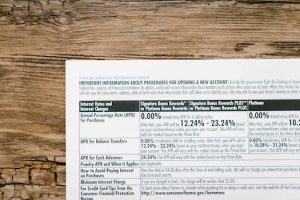High Quality Data: What do we do to ensure accurate insights are being created?
In today’s digital world, data is everything. From consumer behavior to market trends, businesses rely on data to make informed decisions and stay ahead of the competition. However, with the abundance of data available, it’s essential to ensure that the data being used is of high quality. Inaccurate or unreliable data can lead to flawed insights and misinformed decisions, which can be detrimental to a company’s success. In this article, we’ll explore the importance of high-quality data and what steps we can take to ensure accurate insights are being created.
The Importance of High-Quality Data
High-quality data refers to data that is accurate, complete, and relevant to the task at hand. It is the foundation of any successful data-driven strategy as it forms the basis of decision-making and analysis. Without high-quality data, businesses risk making decisions based on false or incomplete information, which can result in lost opportunities and wasted resources.
With the rise of big data and the increasing use of data analytics, it’s more crucial than ever to ensure the data being used is of the highest quality. By doing so, businesses can gain a competitive advantage, increase efficiency, and drive growth.
What Can We Do to Ensure Accurate Insights Are Being Created?
1. Understand the Source of Data
The first step in ensuring high-quality data is to know where the data is coming from. With the growing amount of data available, it’s essential to understand the source, whether it’s internal or external, structured or unstructured.
By having a clear understanding of the data source, businesses can identify potential data quality issues and take steps to address them. For instance, if the data is coming from a third-party source, businesses can cross-reference it with their own internal data to ensure accuracy.
2. Cleanse and Validate Data Regularly
Data cleansing and validation are critical processes to ensure data accuracy. It involves identifying and fixing errors or inconsistencies in the data, such as missing or duplicate data, incorrect formatting, or outdated information.
By regularly cleansing and validating data, businesses can improve its quality and reliability. It also ensures that any insights or analysis generated from the data are accurate and actionable.
3. Invest in Data Quality Tools
With the increasing need for high-quality data, there has been a rise in data quality tools and software. These tools use advanced algorithms and techniques to identify and resolve data quality issues, saving time and resources for businesses.
Investing in data quality tools can also help businesses maintain data quality standards and provide a more efficient process for data cleansing and validation.
4. Implement Data Governance Policies
Data governance refers to the overall management of the availability, usability, integrity, and security of data. It involves creating policies and procedures to ensure data is handled consistently and accurately throughout its lifecycle.
By implementing data governance policies, businesses can ensure that data is being managed and used correctly. It also helps to maintain data integrity and builds trust in the data used for decision-making.
5. Train and Educate Employees
Even with the best tools and policies in place, data quality is ultimately dependent on the people handling the data. It’s essential to train and educate employees on data quality best practices and the importance of accurate data in decision-making.
Investing in employee training not only improves data quality but also creates a culture of data-driven decision-making within the organization.
The Bottom Line
Data is a valuable asset for businesses, and ensuring its quality is crucial for success. By understanding the source of data, regularly cleansing and validating it, investing in data quality tools, implementing data governance policies, and training employees, businesses can ensure accurate insights are being created. With high-quality data, businesses can make informed decisions, innovate, and stay ahead of the competition in today’s data-driven world.






